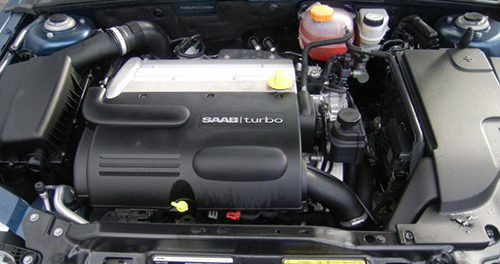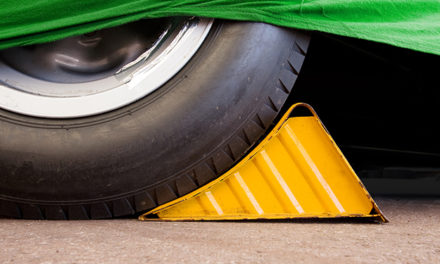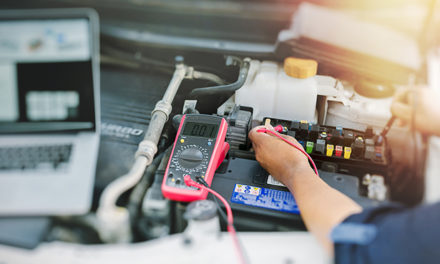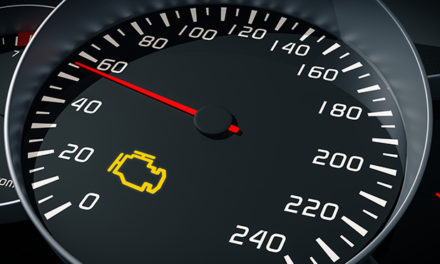Fuel Pump Relay
Always inspect your fuel pump relay when replacing the fuel pump. A worn or damaged relay can cause low voltage.
Diagnosing A Fuel Pump
When diagnosing a fuel pump make sure to check the voltage & ground connections at the fuel pump. When checking with a voltmeter the voltage should be within 0.5 volts of the battery voltage.
Fuel Vapors
Fuel vapors are more flammable than the liquid fuel. When working with injectors, fuel filters, fuel pumps, and the fuel tank, be sure someone doesn’t walk by with a lit cigarette. Sparks created from metal hitting metal could also light fuel vapors. Though it is rare, static electricity enough of it could light fuel vapors. Though it sounds silly, always remind people around you that there are fuel vapors if you are working with an open fuel tank. If you have to repair a fuel tank, do not assume that the vapors will evaporate after a day with the tank open. It is never safe to weld a fuel tank without properly cleaning it.
Don’t Ignore The “Big 5” Noises!
Strange sounds usually indicate a problem, but these “Big 5” noises indicate urgent issues that should be addressed immediately to prevent further damage such as having a wheel fall off while driving:
- Cyclic squealing or chirping from a wheel = bad wheel bearing
- Metallic grinding or scraping during braking = brake pads completely worn out
- Hissing from the engine during or after driving = leaking coolant or overheating
- Tapping or clicking from engine = oil pressure too low
- A roar from the exhaust while driving = faulty exhaust system; deadly carbon monoxide leak possible






![[Vehicle Fitment-1]: Compatible with GMC Yukon XL 1500 2002-2006 6.0L, Yukon XL 2500 2000-2006 6.0L, Savana 1500 2003-2007 5.3L, Savana 2500 2003-2007 4.8L, Savana 2500 2003-2005 5.3L, Savana 2500 2003-2007 6.0L, Savana 3500 2004-2007 4.8L, Savana 35...](https://m.media-amazon.com/images/I/51hwEfRWZGL._SL100_.jpg)
![[ FITMENT ] : This injector Replacement for For Ford F-150 2005-2007 5.4 L V8,F-250 Super Duty 2005-2007 5.4 L V8, F-350 Super Duty 2005-2007 5.4 L V8, Expedition 2005-2006 5.4 L V8, For Lincoln Navigator 2005-2007 5.4 L V8, Mark LT 2006-2007 5.4 L V...](https://m.media-amazon.com/images/I/51rrk1kszxL._SL100_.jpg)


![[Vehicle Fitment]: Compatible with Kia Magentis 2006-2010 L4 2.4L, Optima 2006-2010 L4 2.4L (Vin 3) [Reference Number]: 311102G100, 311102G100DS, E8782M, FG1730, P76430M, SP3023M [Package Contents]: 1 x Fuel Pump Assembly, Packaging Type: Box [Relate...](https://m.media-amazon.com/images/I/41NHWID2oQL._SL100_.jpg)
![[Vehicle Fitment]: Compatible with Dodge Durango 1998 1999 2000 2001 2002 2003 V6 3.9L V8 4.7L/5.2L/5.9L [Reference Number]: 52102862AB, 5003465AB, 5003465AD, E7117M, FG0238, P74803M, F3128A [Package Contents]: 1 x Fuel Pump Assembly, Packaging Type:...](https://m.media-amazon.com/images/I/41oNxJrbzkL._SL100_.jpg)